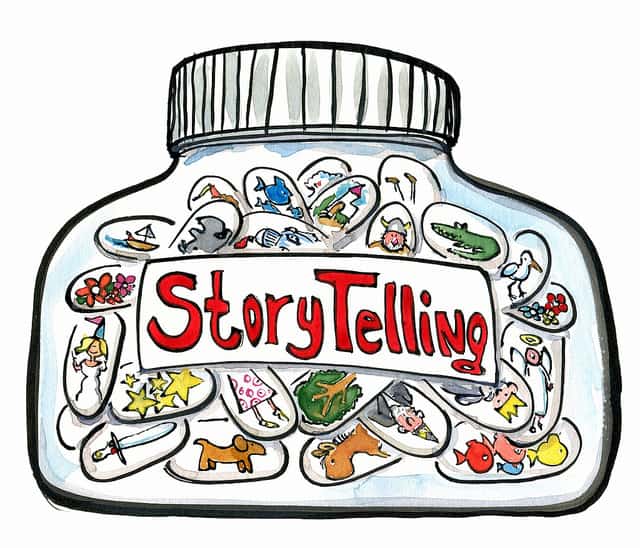 |
| https://img.wonderhowto.com/img/52/78/63536283888612/0/10-surefire-ways-spot-liar-and-tell-better-lies-yourself.1280x600.jpg |
Learning Objective: Students will be able to identify the basics of storytelling after class
discussion and shall demonstrate them through the improv game “Liar.”
1. In front of the class tell a story about the origin of your name. Your time limit is 1 minute or less. How does it feel to tell a story about yourself in front of the class?
2. Storytelling elements:
 |
| https://ind5.ccio.co/C7/5/w8/9cb5f1ecee949d1f4ec6d193e0965e5e.jpg |
3. “Liar.”
This game is played by having one student stand in front of the class
and tell a story.
Before the teller begins, ask the rest of
the class for a setting and a conflict. The student telling the story
must tie these elements into the story. At any point, the audience may
yell “liar!” at the teller. When this happens, the teller must change
what he or she just said. For example:
Teller: I walked into the bookstore…
Audience: LIAR!
Teller: I army crawled into the bookstore…
The audience is capable of yelling “liar!” at any point and multiple
times at once, but stress that they must allow the storyteller to tell
the story. It may be best to have the teacher be the only one allowed to
yell “liar!” until it feels that the class understands the rhythm. As
different stories are told, be sure to ask what good elements are being
used. The teller should never say “I didn’t do _____, I did ______
instead”, because it breaks the flow. Simply change what happened.
September 21
1. Critique what we did yesterday. What worked and what didn't work?
Think back to the discussion of what a good story consists of. What
could be better? What techniques could be use to make sure each element
is touched upon?
2.
Fable - What is a fable? It is a literary
genre. It is a short story that teaches a moral lesson.
The most famous fables are from Aesop. According to Wikipedia, "
Aesop ( c. 620 – 564 BCE) was a Greek fabulist and story teller credited with a number of fables now collectively known as
Aesop's Fables.
Although his existence remains unclear and no writings by him survive,
numerous tales credited to him were gathered across the centuries and in
many languages in a storytelling tradition that continues to this day.
Many of the tales are characterized by animals and inanimate objects
that speak, solve problems, and generally have human characteristics."
Let's try one: The tortoise and the hare, an Aesop Fable
http://diannedelascasas.com/wp-content/uploads/2012/10/Tortoise_Hare.pdf
Find a story that you like and read it aloud to yourself.
Evaluate your stories once more for tellability and
learnability as they read aloud, as this will be a different experience than
reading it in your head and assessing it. Ask them to keep in mind the
specifics of tellability and learnability.
Now, it's your turn:
http://read.gov/aesop/001.html







